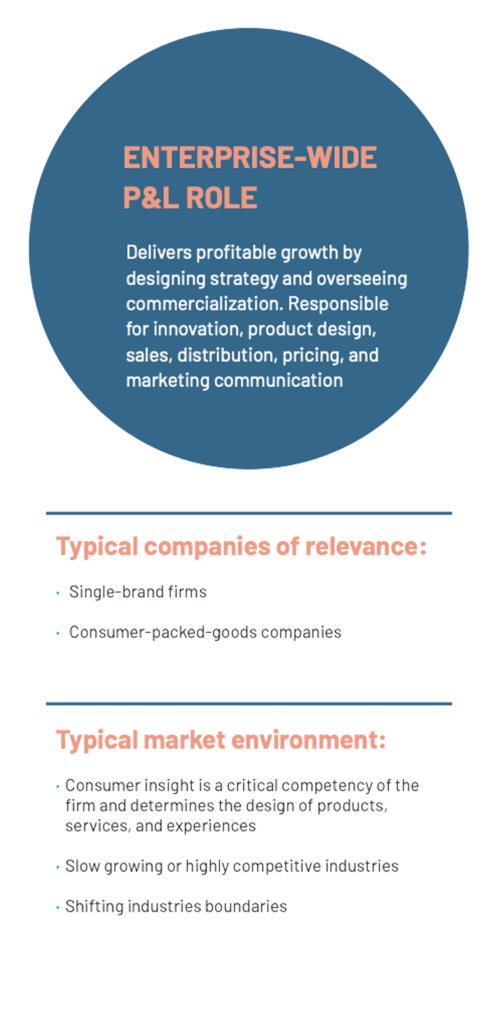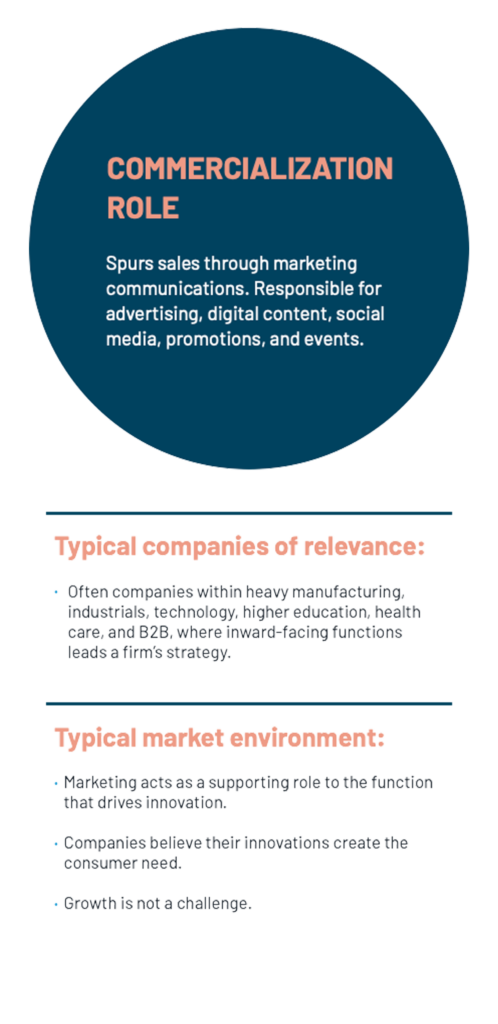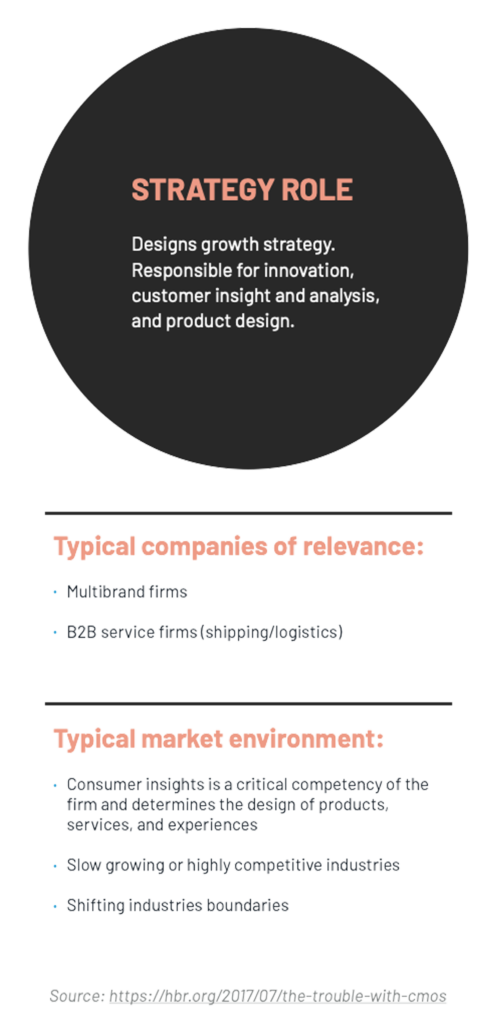Strengthen Your Relevancy as a CMO and Marketer – Part I: How to (re)define your role and increase your impact
The last month has shown just how resourceful companies can be in a moment of crisis. All around the globe, businesses have adapted and pivoted their production, business model and marketing machine at an unprecedented scale and speed. Helping both themselves, their customers and society as a whole. Still, with the global economy starring down the barrel of a recession [The New York Times], sadly we’re likely to see even more companies struggle and default in the period ahead of us.
So, what to do?

CMO challenges – and how to turn them into opportunities
Even before the crisis, much has been written on how CMO’s should navigate to maintain relevancy under increasing pressure and complexity, as we’ve seen the average tenure for CMO’s slipping [WSJ]. So, if the job as a CMO, or as a marketer for that matter, weren’t a minefield already, the current situation has surely seen the mines around the marketing department mushroom.
We’ve tried to consolidate others’ and our own research on the subject, including insights derived from more than 200 annual meetings with management and marketing managers in addition to conversations with existing clients.
In the coming weeks, we will point to three challenges and thus opportunities for CMO’s and marketers.
This week’s article will focus on how to (re)define your position as a marketer within your organization by better aligning your role, responsibilities and performance measures.
We hope you’ll find it useful.
A short guide:
How to (re)define your role in the organization and increase your impact as a marketer
Research from Harvard Business Review has highlighted how that “when responsibilities, expectations, and performance measures are not aligned and realistic, it sets a CMO up to fail.” A recent study by Think with Google similarly confirmed ‘that the role isn’t simply misunderstood, it’s often poorly defined with goals that are frequently misaligned’. So, it’s no wonder that 74% of the surveyed CMO’s in HBR’s study believed that their roles didn’t allow them to maximize their business impact [Harvard Business Review].
Does this frustration and uncertainty feel familiar to you?
If so, here’s a two-step guide on how you can take charge by creating common ground for understanding with your management, setting clearer expectations and possibly redefining your own role, to achieve greater job satisfaction and results.

Step #1: (Re)Define you role once again
Are your current role and responsibilities clearly defined, so that you and the management are on the same page?
Most CMO’s are responsible for generating market insights, developing and calibrating brand and marketing strategy and activating this through a go-to-market plan to drive sales. But here the similarities often stop.
Looking at our client list, which includes +50 B2B and B2c Danish and foreign companies, from start-ups to globally listed companies across finance, manufacturing, shipping, pharma, technology, FMCG, retail, etc. the roles and responsibilities of the marketing department vary considerably. Just as it matters whether you’re spearheading the strategy from HQ or have to follow guidelines as a country/regional manager.
Below, you will find a matrix that provides an overview of how the role and responsibilities of CMO’s typically vary across industries and market conditions.



However, the role of a CMO is far from one-dimensional or static, but dynamic and fluid relating to how your business, customers, and markets evolve. Changing needs, challenges and objectives require that today’s CMO’s wear many hats, which increasingly demands agility, readiness, and interdisciplinary competences.
A case in point
In working with a client, we learned that the marketing department was responsible for driving a determined growth strategy (Enterprise-wide P&L role cf. the matrix above). Their primary responsibility was to develop a brand strategy and convert it into a go-to-market plan through ad campaigns across channels, to drive store traffic and e-commerce sales (Commercialization role).
In effect, they had limited to no control over a lot of the factors influencing topline growth, such as pricing, sales, product range, in-store experience, etc. Effectively creating a mismatch between expectations and actual responsibilities. Together with the client, we helped (re)defining the scope of their role and responsibilities and manage expectations accordingly on our joint projects.
Recommendation:
Ask yourself these questions and talk with your management colleagues to create common ground for understanding and alignment of expectations regarding your role:
- Is my (current) role explicitly defined and aligned with the rest of management?
- Is there a match between the expectations of my role and the scope of my responsibilities?
- Is there consistency between my role and responsibilities and my current budget, resources, employee skills and ‘readiness’ of the organization?
Step #2: (Re)Define your KPI’s
Alright, so now you’ve got your role and responsibilities clearly defined and aligned with management. But how is success defined in your current role?
The next challenge that many CMO’s then face is that their performance metrics are often not defined relevantly or accurately regarding their duties. In the study done by Harvard Business Review, they found that only “22% of job descriptions we studied mentioned how the CMO would be measured or held accountable, and only 2% had a specific section that clearly articulated job expectations. While 90% made some mention of expectations, they were typically vague”. Unless it is clearly defined how you are successful in your job, you will naturally run into misunderstandings and frustrations.
A case in point
One of our clients had a goal of raising the awareness, image, and profile of the company as well as supporting the efforts of the sales department. The assigned tasks were to develop marketing communication, across social media, digital and ad campaigns. However, the specific speed and degree to which the brand metrics (i.e. rankings in industry surveys) were to increase, as well as the success parameters for the sales support activities (i.e. conversions, number of leads, etc.) were not clearly defined. As such, success became dependent on gut feeling instead of specific and realistically defined goals. Here we could help by guiding how to set and manage expectations and performance goals for the activities we were involved in.
As pointed out earlier, the role and responsibilities as a CMO are likely to evolve considerably over time to reflect shifts within your company, your customers and the market. To avoid a creep of scope between your roles and responsibilities on the one hand and the performance measures to which you’re accountable for, it’s important to continuously revisit these to make sure they’re aligned and realistic.
Recommendation:
Ask yourself these questions and talk with your management colleagues to create common ground for understanding and alignment of expectations regarding your performance metrics:
- Do your current performance metrics match your role and responsibilities?
- Are your success targets realistically compared to the available resources?
- How do your performance metrics relate and interconnect to the role, responsibilities, and goals of the rest of the C-suite?

A final remark
When diagnosing the alignment of your current role, responsibilities and performance metrics, it’s also a welcome opportunity to reflect on how you want your role to evolve. Maybe you’ll find, that there’s ample opportunity to (re)define your role while elevating and empowering yourself and your colleagues. No two organizations are alike, so use your network, partners, agencies, etc. to get a clearer picture on how you want your role to grow.
Hopefully, this article has left you a bit wiser, and inspired
See you next week?
I hope you found the article relevant– and if so – I urge you to tune in next week, when we’ll dive into why should shift your mindset from focusing on ‘share of voice’ to aiming for ‘share of journey’.Take care!